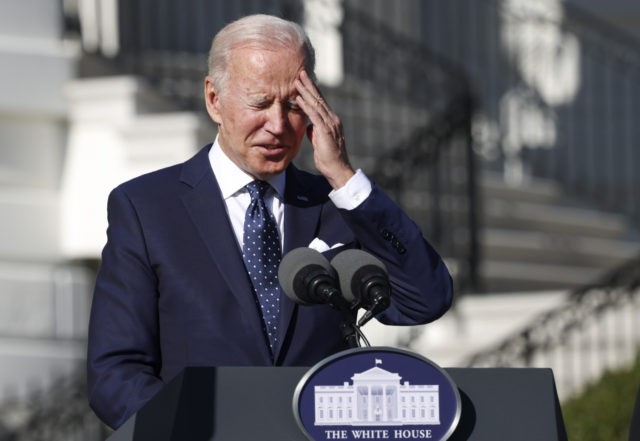A key measure of the market’s inflation expectations has soared in recent days, cementing worries that the Federal Reserve will not be able to bring the rate of rising prices back down toward its long-term target of two percent.
As of Wednesday, the gauge known as the 10-year break-even rate implied that bond market investors expect that the consumer-price index will rise by an annual average of 2.62 over the next decade, the highest rate since 2012.
The five-year break-even inflation rate rose to 2.86, the highest since 2005.
Surging energy costs, clogged shipping lanes, port congestion, supply chain disruptions, a shortfall of truck drivers, and an unexpected shortage of labor have all been contributing to inflationary pressures around the globe. The Biden administration’s last round of stimulus programs succeeded in pumping up consumer spending, exacerbating the inflation problem.
The break-even rates are determined by the difference between yields nominal U.S. Treasurys and Treasury inflation-protected securities, or TIPS. The latter increase their payout when the CPI rises. The yields on TIPS are typically lower than ordinary Treasurys of the same maturity because they are not taking inflation risk. It’s called the break-even rate because it is the rate at which investors in TIPS would earn the same amount as investors in Treasurys if CPI matches the yield gap over the life of the bonds.
Corporate executives have been using their quarterly results presentations to discuss the impact of inflation on their businesses, with many warning of squeezed margins and the need to raise prices. Executives have also stressed that they see no signs of inflation abating, although the rate of price increases is still expected to slow from the heights of this summer.
Thursday biggest-ever auction of TIPS, a $19 billion offering. The auction produced a record low yield of negative 1.685 percent. That was lower than pre-auction yields, which bond traders say is a sign that demand for the securities exceeded market expectations.
The Federal Reserve closely monitors break-evens alongside surveys of consumers and business executives to gauge inflation expectations.


COMMENTS
Please let us know if you're having issues with commenting.